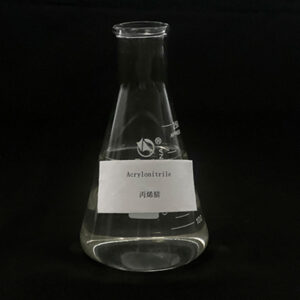Several analytical methods are employed to identify and characterize inorganic chemicals based on their properties and compositions.
Some commonly used techniques include:
- Spectroscopic Methods:
- X-ray Diffraction (XRD): Determines the crystal structure and arrangement of inorganic compounds by analyzing their diffraction patterns upon exposure to X-rays.
- X-ray Fluorescence (XRF): Identifies and quantifies elemental composition in inorganic samples by measuring the fluorescent X-rays emitted when the sample is exposed to high-energy X-rays.
- UV-Visible Spectroscopy: Measures the absorption of ultraviolet and visible light by inorganic compounds, providing information about their electronic structure.
- Mass Spectrometry (MS):
- Inductively Coupled Plasma Mass Spectrometry (ICP-MS): Analyzes inorganic samples for trace elements or isotopic composition by ionizing the elements and measuring their mass-to-charge ratios.
- Electrospray Ionization Mass Spectrometry (ESI-MS): Used to analyze the molecular mass and structure of inorganic compounds in solution by generating ions in an electric field.
- Chromatographic Techniques:
- Ion Chromatography (IC): Separates and quantifies inorganic ions in a sample by their interaction with an ion-exchange resin and subsequent elution with a mobile phase.
- Gas Chromatography (GC): Analyzes volatile inorganic compounds by separating them based on their affinity with a stationary phase and a mobile gas phase.
- Electrochemical Methods:
- Potentiometry: Measures the electrical potential of inorganic ions in solution using ion-selective electrodes, providing information about ion concentration.
- Cyclic Voltammetry: Studies the electrochemical behavior of inorganic compounds by measuring current as a function of applied potential, offering insights into redox processes.
- Microscopy Techniques:
- Scanning Electron Microscopy (SEM): Provides high-resolution images of the surface morphology and elemental composition of inorganic samples using electron beams.
- Transmission Electron Microscopy (TEM): Examines the internal structure and composition of inorganic compounds at nanoscale resolution using transmitted electrons.
- Nuclear Magnetic Resonance (NMR):
- Solid-State NMR: Analyzes the nuclear spin interactions of nuclei in inorganic solids to determine their structural and chemical information.
- Thermal Analysis:
- Differential Scanning Calorimetry (DSC) and Thermogravimetric Analysis (TGA): Measures changes in heat flow or mass of inorganic compounds with respect to temperature, identifying phase transitions or thermal stability.
Each of these analytical methods offers unique insights into the properties, structure, composition, and behavior of inorganic chemicals, enabling researchers, Inorganic chemical suppliers scientists, and analysts to identify, characterize, and quantify these compounds in various applications across different industries. The choice of method depends on the specific properties and nature of the inorganic compound being studied.
How are inorganic chemicals synthesized or manufactured on an industrial scale?
Inorganic chemicals are synthesized or manufactured on an industrial scale through various methods tailored to the specific compound and desired applications. Some common approaches include:
- Direct Synthesis:
- Chemical Reactions: Inorganic chemicals can be synthesized through direct chemical reactions between precursor compounds. For example, the Haber process produces ammonia (NH3) by reacting nitrogen and hydrogen gases at high temperature and pressure over a catalyst.
- Extraction and Purification:
- Mining and Extraction: Some inorganic chemicals, such as metals and minerals, are obtained through mining operations. These raw materials are then processed to extract and purify the desired compounds.
- Electrolysis: Certain metals, like aluminum, are obtained through electrolytic processes where ores are dissolved in a solvent and subjected to an electric current to separate the metal from impurities.
- Industrial Processes:
- High-Temperature Processes: Inorganic chemicals are often produced through high-temperature processes such as calcination, where raw materials are heated to high temperatures to induce chemical reactions and form desired compounds.
- Reduction and Oxidation: Inorganic compounds are synthesized through reduction or oxidation reactions. For example, the production of iron involves reducing iron oxides with carbon in a blast furnace.
- Complex Synthesis:
- Multi-Step Synthesis: Some inorganic chemicals require multi-step synthesis involving several chemical reactions to achieve the desired compound. Complex catalysts or intermediates may be involved in these processes.
- Industrial Chemical Plants:
- Large-Scale Facilities: Inorganic chemicals are often produced in large-scale chemical manufacturing plants equipped with specialized reactors, distillation columns, and other equipment for synthesis, separation, and purification processes.
- Catalytic Processes:
- Catalytic Reactions: Inorganic chemicals are sometimes synthesized through catalytic processes where specific catalysts facilitate reactions, improving reaction rates and yields.
- Green Chemistry Approaches:
- Environmentally Friendly Methods: Efforts are made to develop greener and more sustainable methods for synthesizing inorganic chemicals, reducing waste, energy consumption, and environmental impact.
The choice of synthesis method depends on factors such as the nature of the compound, its intended application, cost-effectiveness, efficiency, and environmental considerations. Industrial-scale production of inorganic chemicals often involves optimizing reaction conditions, purification methods, and process efficiency to meet the required specifications and quantities demanded by various industries.
